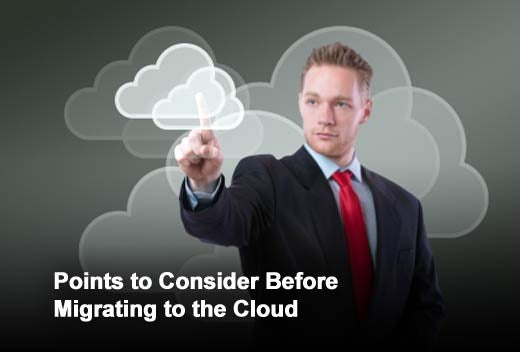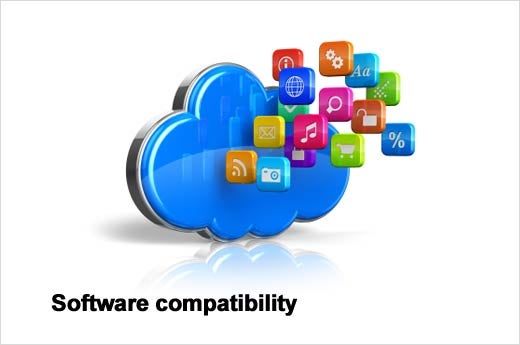Employee personal adoption of the cloud combined with a range of improvements in the security of cloud technologies have driven more CIOs to consider cloud computing to cut costs and improve IT efficiency throughout their organizations. By the end of 2015, the size of the global cloud services market is estimated to be $180 billion. If you’re one of the organizations looking to move some of the 50 million physical servers worldwide to the cloud, a few critical points, identified by Rory Canavan of 1E, must be taken into consideration.

Click through for 10 factors organizations should take into consideration before migrating to the cloud, as identified by Rory Canavan, 1E.

Does your existing license permit your software to be hosted via the cloud?
It might be technically feasible to host your already purchased software in a SaaS style service, but typically virtualization and SaaS should be deemed a privilege, not a right – invariably software vendors will demand a levy for the flexibility that SaaS can offer.

Does your existing software work with the cloud?
You might have planned to move your existing software titles to a remote server, but you may find those titles don’t actually cope with the technology required to serve those titles to your business.

Do you have a means of independently verifying usage once titles/ platforms/ infrastructure are hosted in the cloud?
Blind faith in accurate metering should not be the byword when dealing with cloud providers; your ability to independently verify usage (and therefore billing) should be ratified prior to the signing of any contract.

What measurements determine acceptable delivery/ service?
Speed of service and recovery from outage are but two metrics that should be factored into any measurement criteria once a cloud service goes live. Consider the OLAs that are placed on your in-house IT infrastructure – have you converted those OLAs into SLAs for your cloud provider?

Does your agreement stipulate fines/compensation for exceeded downtime?
Losing a cloud service could sting, but make sure you are adequately compensated if it begins to bite. Be very precise around what constitutes outage, and when any fiscal penalties should kick in.

What contingency is in place for business continuity management (BCM)?
Aligned to any discussions around fiscal penalties should be a demonstration of resilience on behalf of the provider, and what they are prepared to do in the event of an interruption to day-to-day services (it may be that you need to drive further improvements in their existing BCM plans, if your own business is particularly demanding).

What contingency is in place for Disaster Recovery (DR)?
Fire extinguishers and 24/7 security guards are all well and good, but has the cloud provider widened their eyes sufficiently to the potential disasters that could befall them? What goes for BCM applies equally to DR.

Where is your data going to reside?
Of vital importance: You may have your own contingencies in place over and above the plans a service provider might offer, but just be careful that you don’t spirit your data to a place that might be contractually locked. Software and hardware can be bought again, but once data is gone, it’s gone.

Do you have safe harbour data considerations to address?
In light of PRISM revelations, is anywhere safe for data anymore? If your cloud service is owned by an American company, then be aware that they will be subject to NSA/FISA rulings that prevent them under U.S. law to reveal any data passed to U.S. security services that you previously deemed confidential between the provider and you (as a client).

Does your cloud provider have the rights to provide a cloud service?
Maybe it’s an afterthought, but do check to see that the provider offering cloud solutions has the right to use the technology they are offering as a service – otherwise your company might find itself on the wrong end of litigation.



















